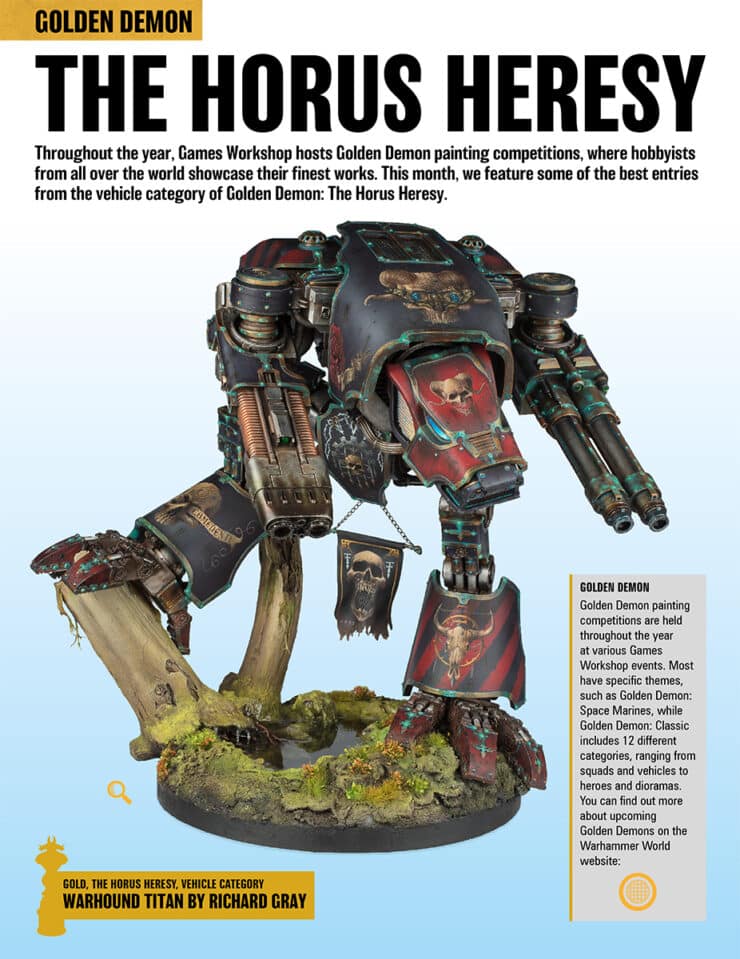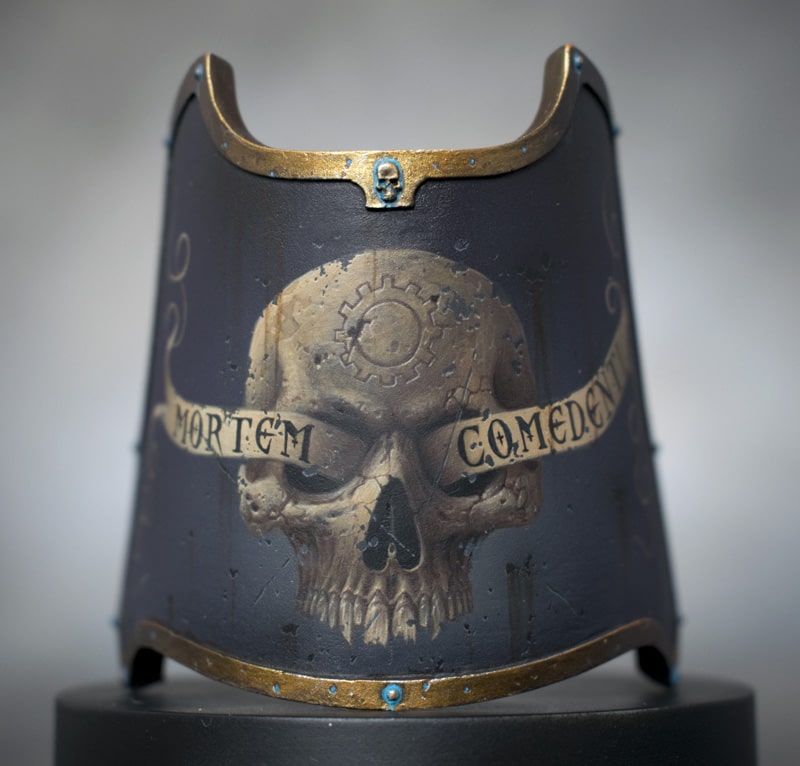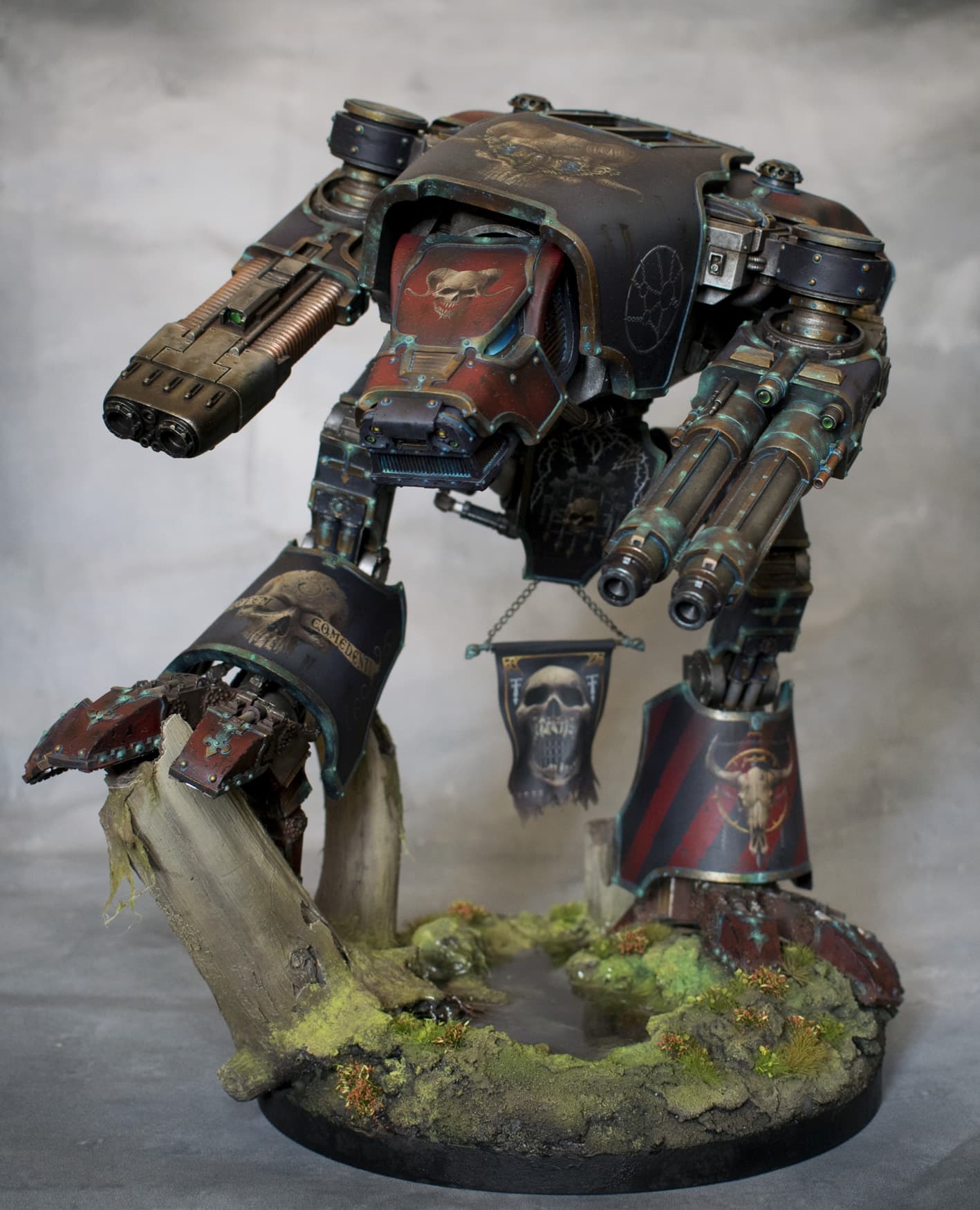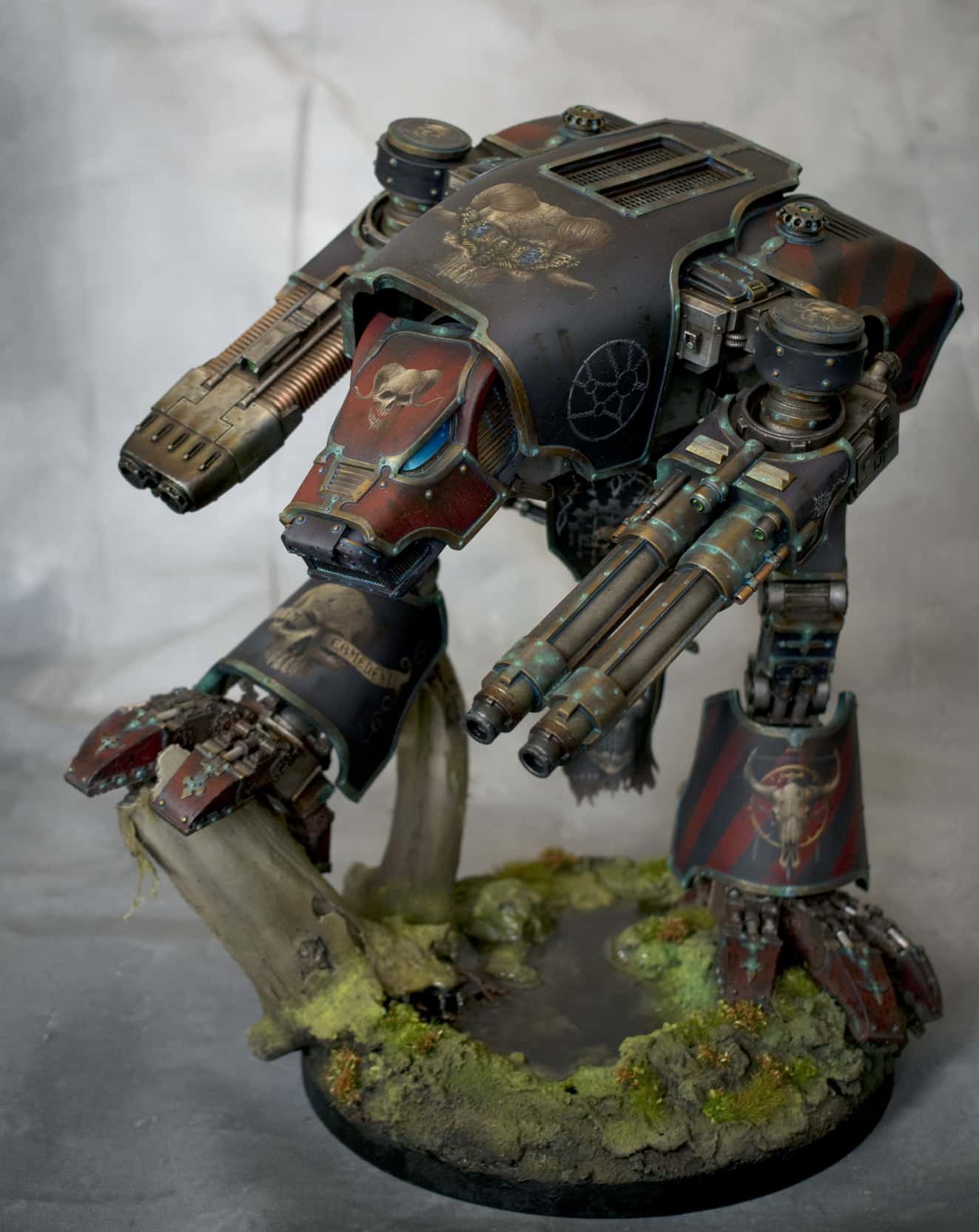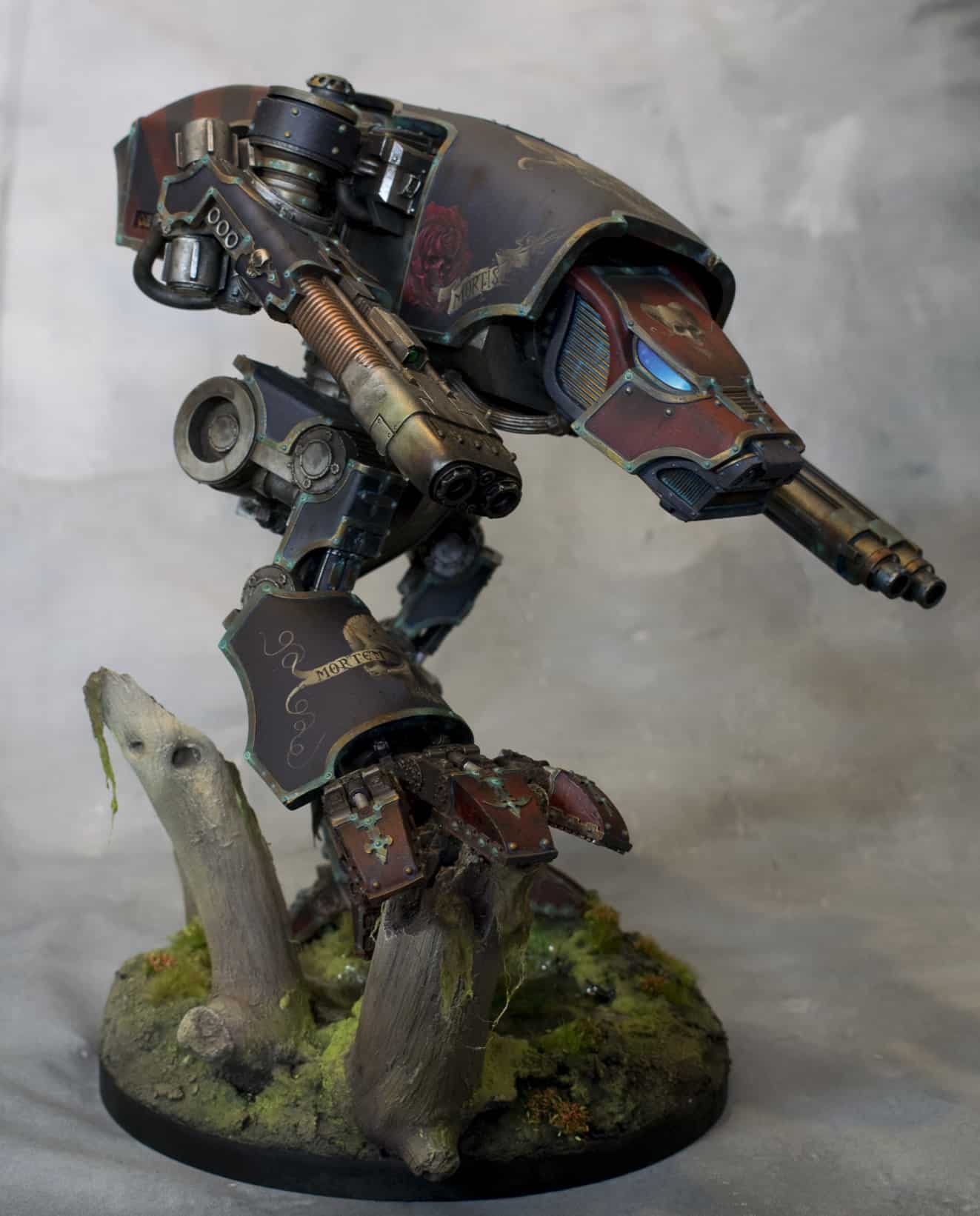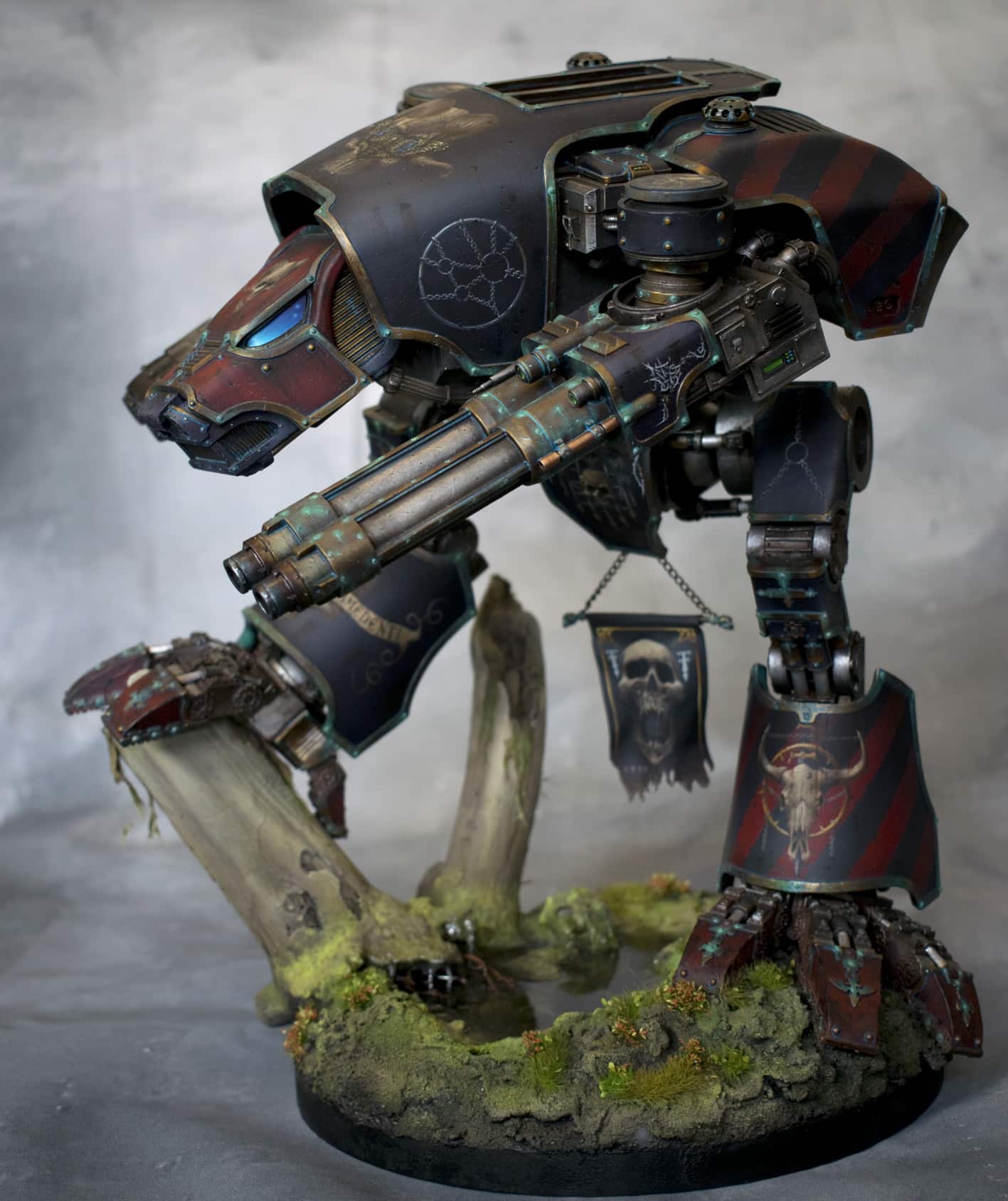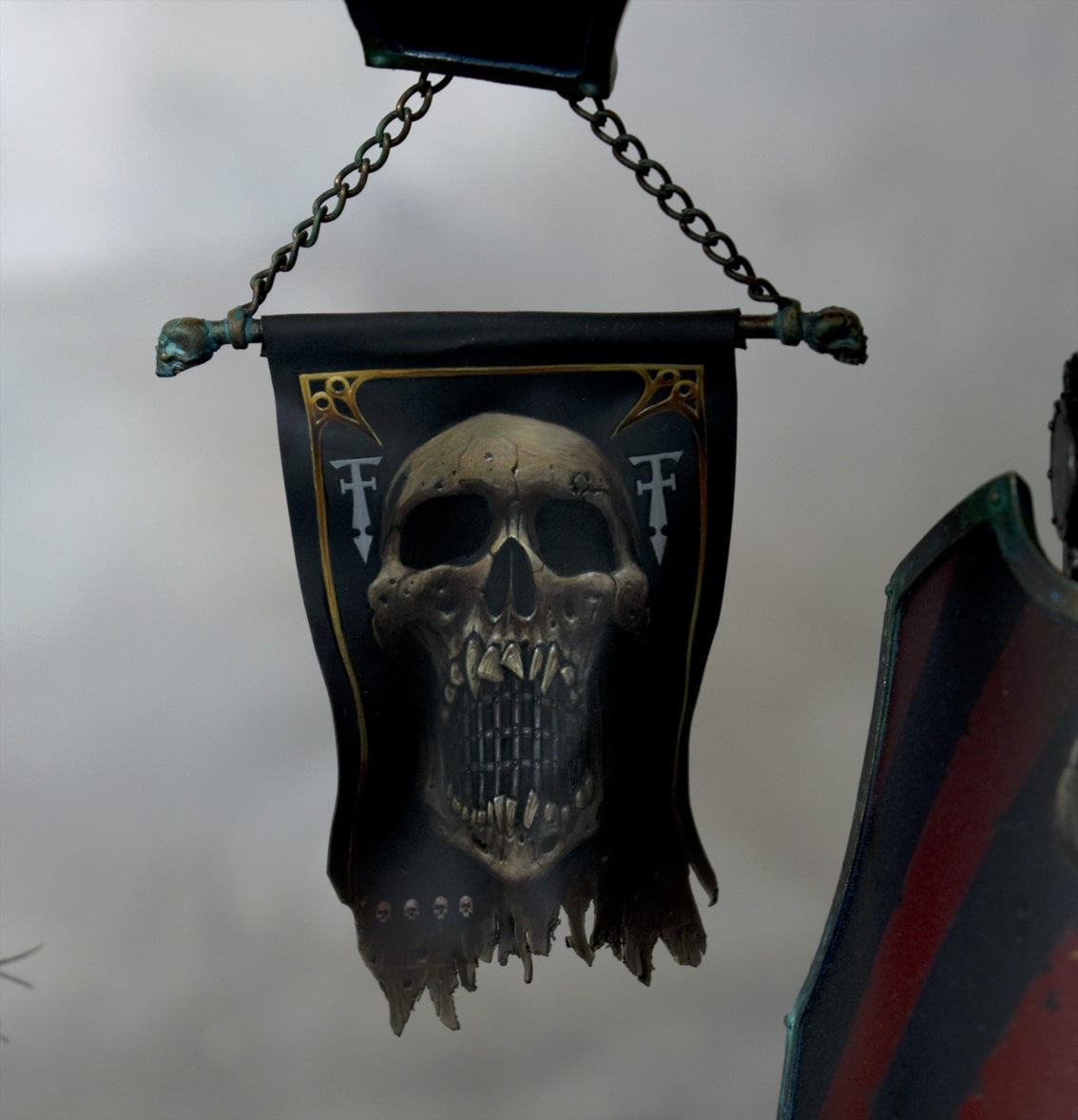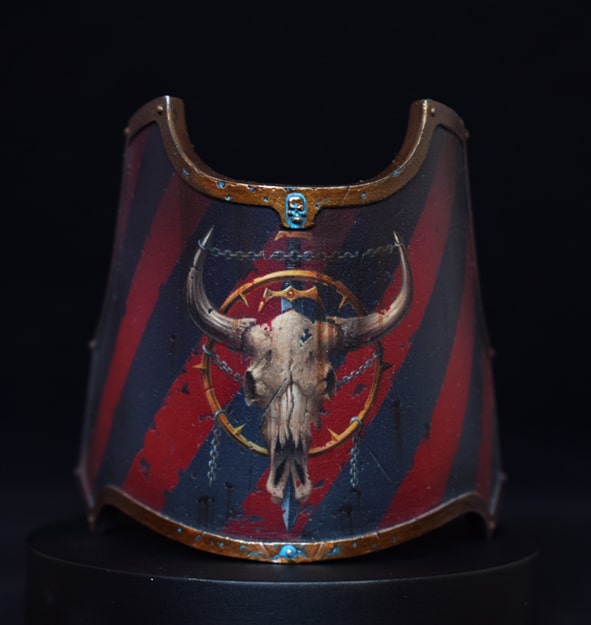A feature from White Dwarf about my Golden Demon Warhound. Throughout the year, Games Workshop hosts Golden Demon painting competitions, where hobbyists from all over the world showcase their finest works. This month, we feature some of the best entries from the vehicle category of Golden Demon: The Horus Heresy.
I scooped a Gold Golden Demon for my efforts – read on for the whole interview!
Richard Gray: The reason I painted a Warhound was because I wanted to paint something big with lots of space for freehand artwork. I also have a passion for robots with large guns! The colour scheme is a by-product of me wanting to paint a moth on the model. The Legio Mortis has a more common name, the Death’s Heads, and there is a moth called the death’s-head moth, so it was a perfect fit for me. While the colours are based on the Legio Mortis colour scheme, I wanted the Titan to be really dark, moody and dirty so that it looked like it had seen lots of action over many millennia. This was achieved by applying lots of surface weathering to keep the model looking dull and foreboding. I originally painted all the metal trim a shiny gold, but it was so bright that it overpowered the model. The gold had to go and I swapped it for bronze to reinforce the dark look.
For me, Titans are ancient gods of war and should be represented as such, with lavish art on them that tells the enemy that they bring death! I tried very hard to make the freehand match the style of the Legion. It was a delicate balance as it couldn’t be garish or just painted on for the sake of it. Each section of freehand needed to be unique, while staying true to the Legion; there was a lot of research involved. Skulls were a strong theme among the freehand pieces. All the freehand has little flourishes and details to make it individual –and even the rose on the side of the carapace has a skull in the centre of it! I often get asked how I come up with freehand designs; sometimes I do a rough sketch so I have something to work from, but mostly I just have an idea in my head that I follow. I also use various reference images while painting so that I get elements like the proportions of the skulls right.
As for the base, I had never tried anything so large and complicated before. I wanted a sense of narrative to the piece, with the Titan pushing the tree over – you can just see its roots being ripped out of the ground. Water is running from the base of the tree, and beneath you can see skulls that have been uncovered. The bottom of the tree is actually all sculpted so that I could hide the real branch that’s pinned to the wooden base. The ground is just sand mixed with glue and painted! I had to be careful with the water effect, though, as it almost didn’t dry in time for the event!
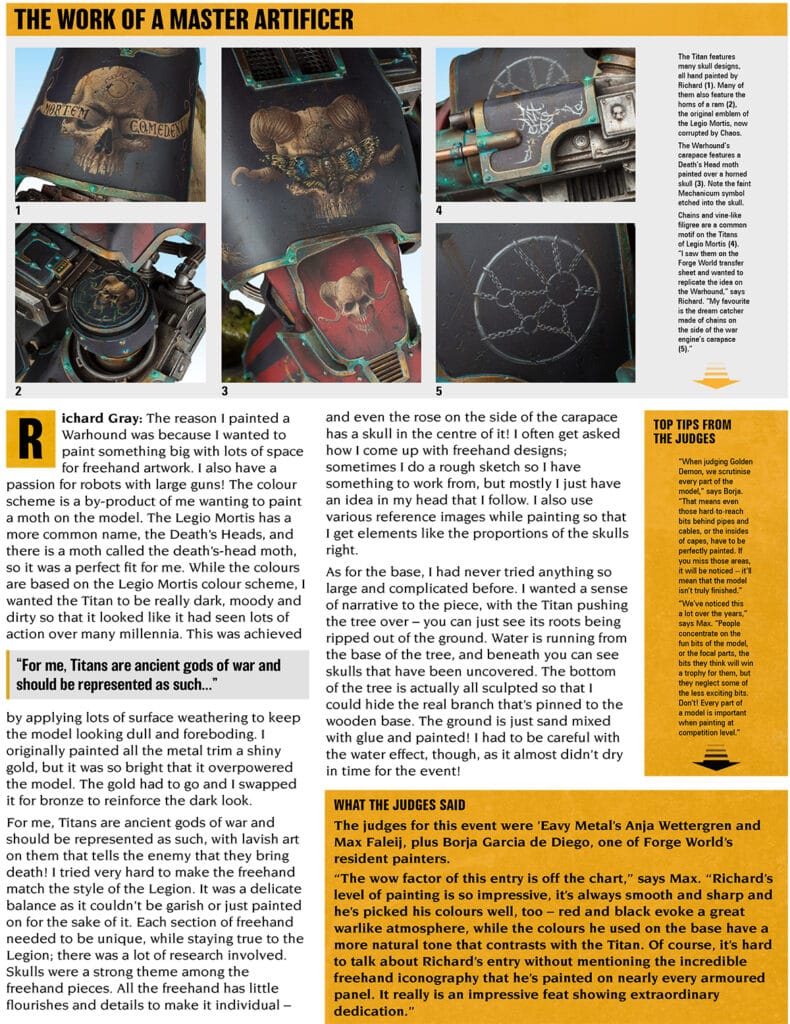
The Titan features many skull designs, all hand painted by Richard. Many of them also feature the horns of a ram, the original emblem of the Legio Mortis, now corrupted by Chaos.
The Golden Demon Warhound’s carapace features a Death’s Head moth painted over a horned skull. Note the faint Mechanicum symbol etched into the skull.
Chains and vine-like filigree are a common motif on the Titans of Legio Mortis.
“I saw them on the Forge World transfer sheet and wanted to replicate the idea on the Golden Demon Warhound,” says Richard. “My favourite is the dream catcher made of chains on the side of the war engine’s carapace”
Photos of my Golden Demon Warhound
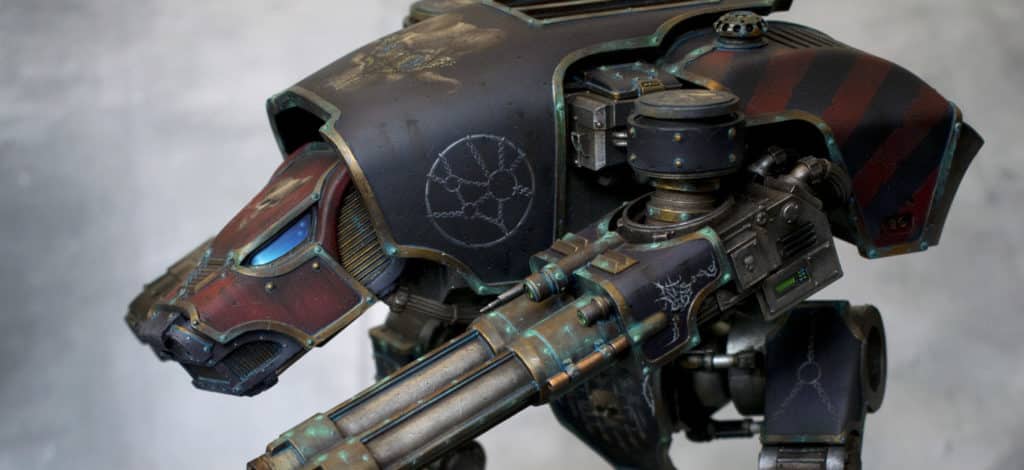
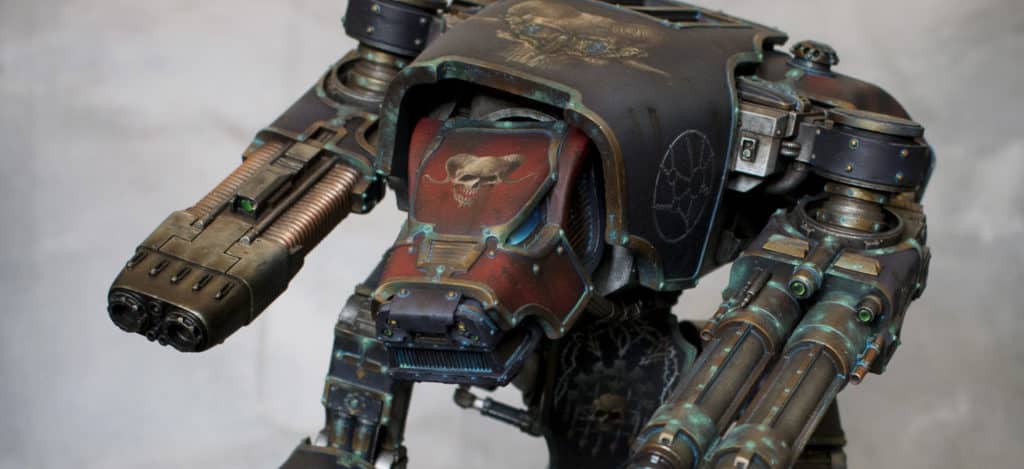
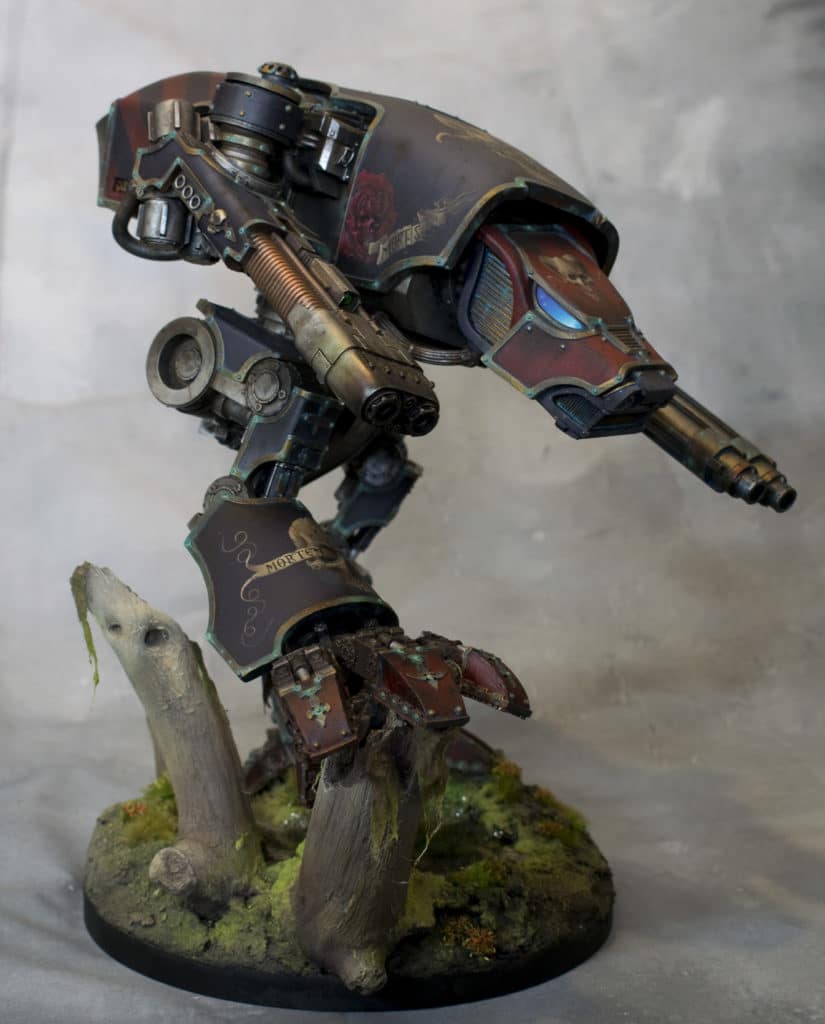
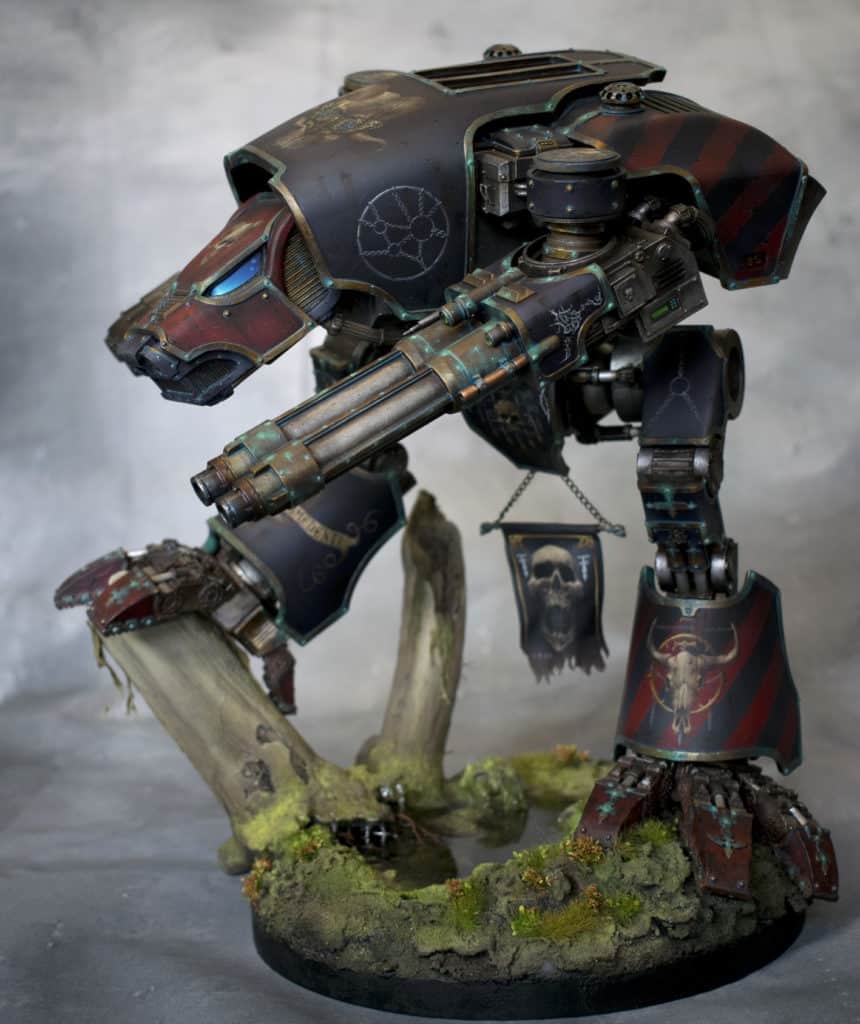
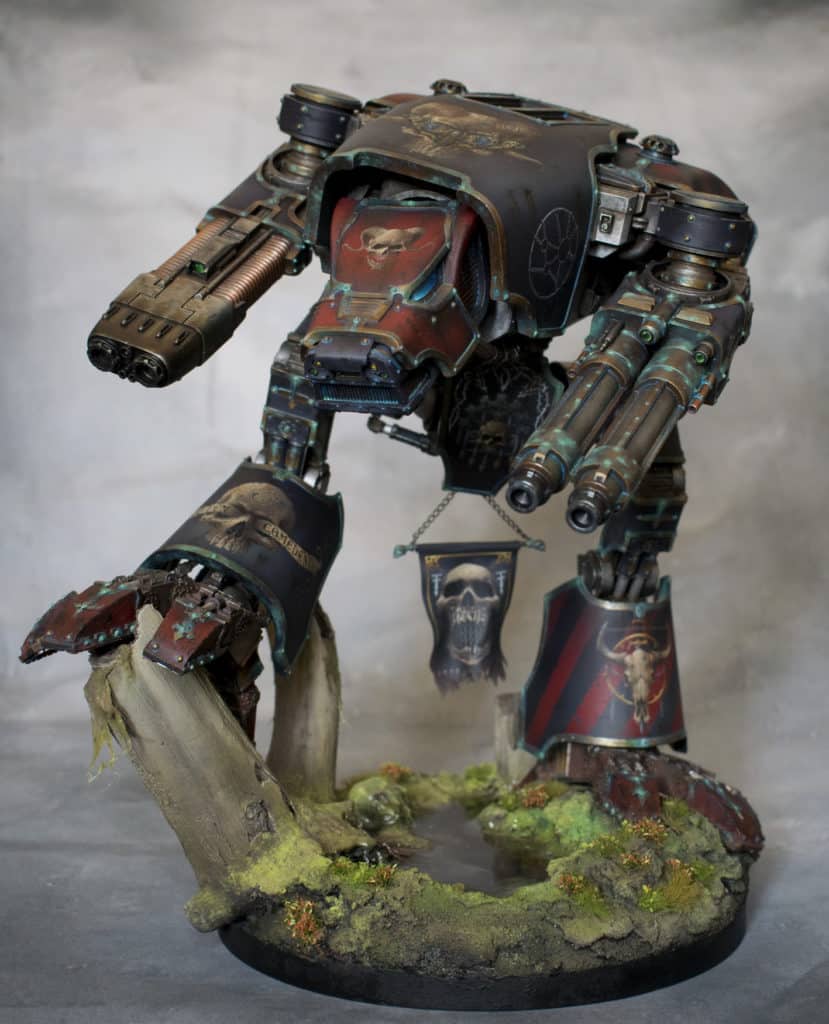
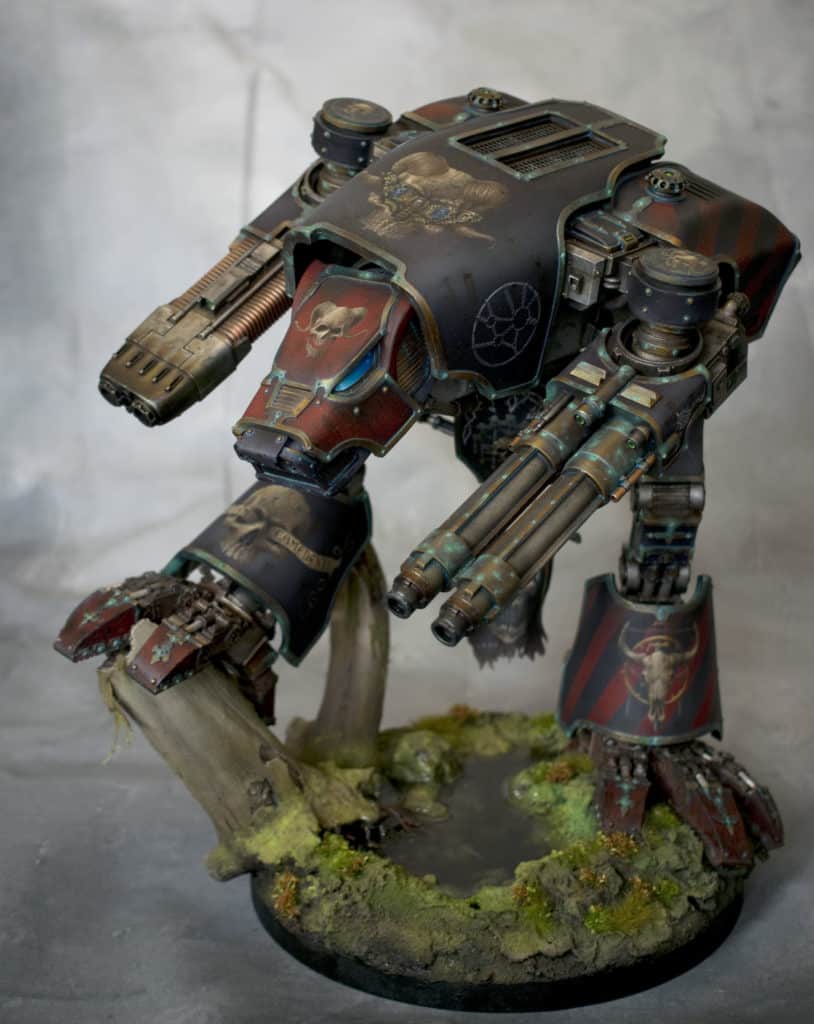
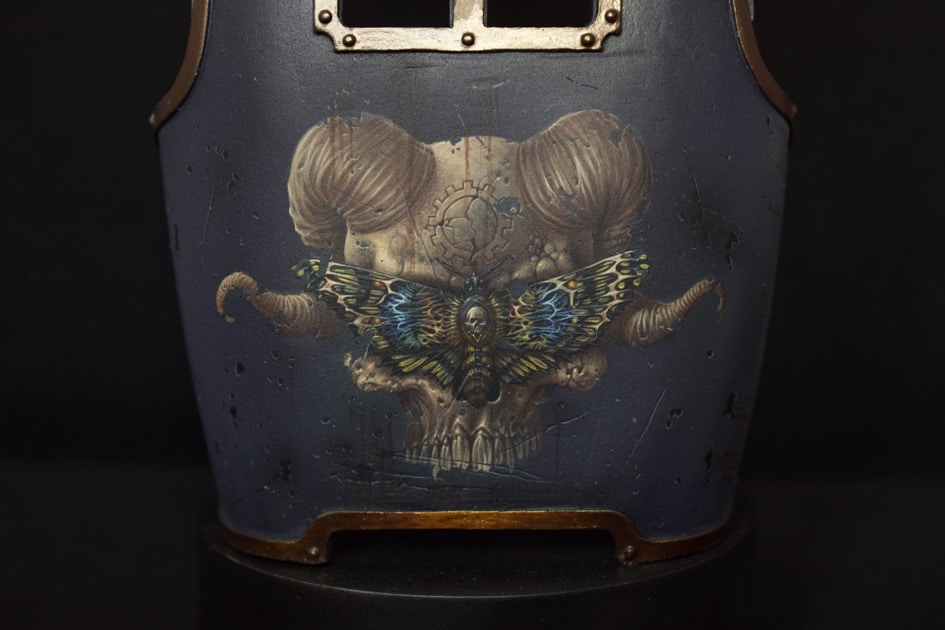
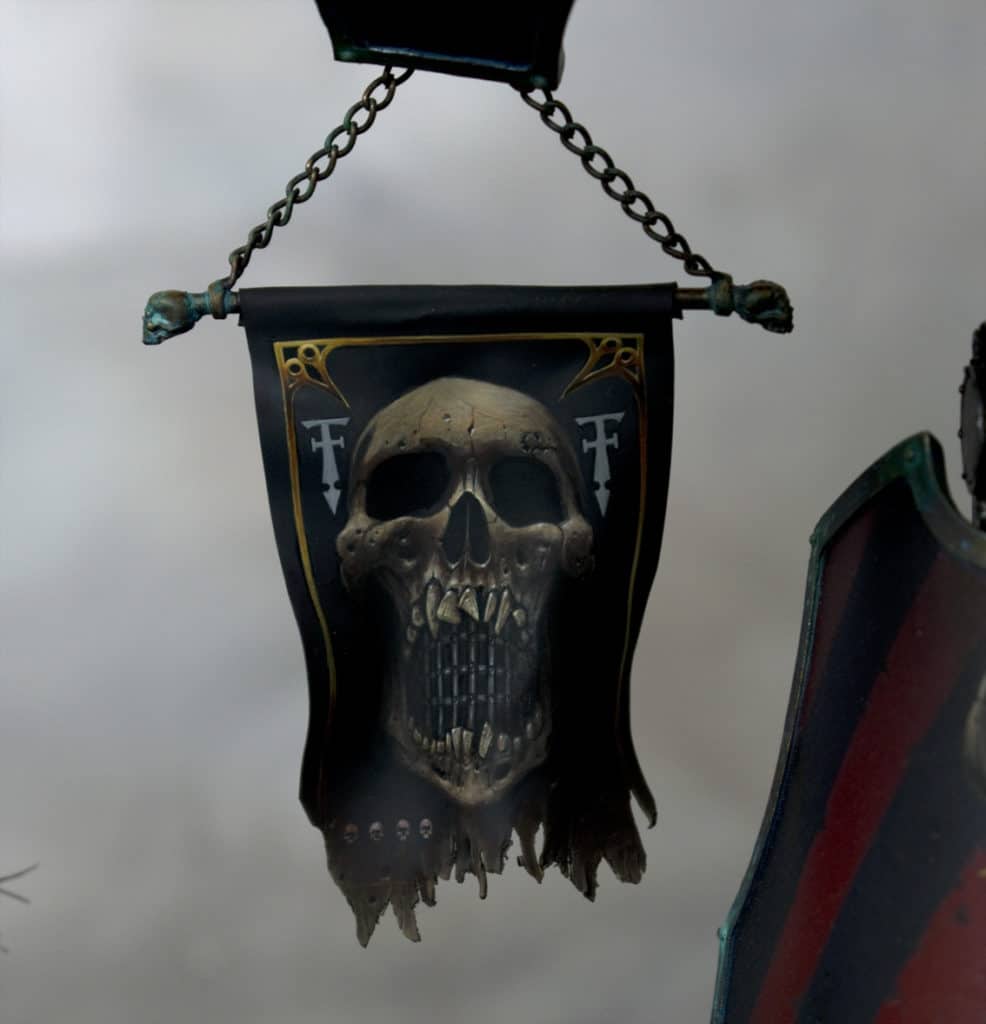
WHAT THE JUDGES SAID
The judges for this event were ’Eavy Metal’s Anja Wettergren and Max Faleij, plus Borja Garcia de Diego, one of Forge World’s resident painters.
“The wow factor of this entry is off the chart,” says Max. “Richard’s
level of painting is so impressive, it’s always smooth and sharp and
he’s picked his colours well, too – red and black evoke a great
warlike atmosphere, while the colours he used on the base have a
more natural tone that contrasts with the Titan. Of course, it’s hard
to talk about Richard’s entry without mentioning the incredible
freehand iconography that he’s painted on nearly every armoured
panel. It really is an impressive feat showing extraordinary
dedication.”
“When judging Golden Demon, we scrutinise every part of the model,” says Borja. “That means even those hard-to-reach bits behind pipes and cables, or the insides of capes, have to be perfectly painted. If you miss those areas, it will be noticed – it’ll mean that the model isn’t truly finished.”
“We’ve noticed this a lot over the years,” says Max. “People concentrate on the fun bits of the model, or the focal parts, the bits they think will win a trophy for them, but they neglect some of the less exciting bits. Don’t! Every part of a model is important when painting at competition level.”
Learn to paint like my Golden Demon Warhound!
If you don’t have an account, please sign up here! The website currently has over 350 video tutorials with steps and tips, plus a selection of PDFs. If you are not sure about joining, you can explore my free videos with a free membership, or take the plunge and become a full subscriber for full access.
If you’d prefer to support me on Patreon, please visit: https://www.patreon.com/RichardGray





